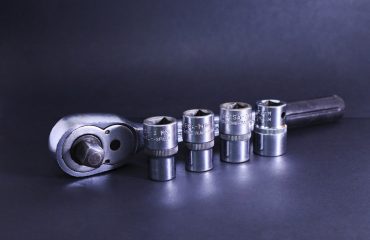Cold drawn round steel bars are ubiquitous in various industries, renowned for their superior strength, precision, and excellent surface finish. This comprehensive guide delves into the intricacies of these versatile materials, exploring their manufacturing process, properties, applications, advantages, and specifications. Understanding these aspects is crucial for engineers, manufacturers, and anyone working with high-performance steel components.
The Cold Drawing Process: Shaping Steel with Precision
Unlike hot-rolled steel bars, which are shaped at high temperatures, cold drawn steel bars undergo a process of deformation at room temperature. This process begins with a hot-rolled bar, which is then subjected to a series of controlled reductions in diameter by pulling it through a series of dies. The dies are precisely engineered to achieve the desired final dimensions and tolerances. This cold working process significantly alters the steel’s microstructure, leading to enhanced mechanical properties.
The process involves several key steps: pickling (removing surface oxides), drawing (reducing diameter through dies), straightening (eliminating bending and warping), and finally, cutting to the required lengths. The precise control during each stage ensures exceptional dimensional accuracy and surface quality, resulting in bars with tighter tolerances compared to hot-rolled counterparts.
Different lubricants are used during the drawing process to minimize friction and wear on both the bar and the dies. The choice of lubricant significantly impacts the final surface finish and the efficiency of the process.
Exceptional Mechanical Properties: Strength and Durability
The cold drawing process dramatically improves the mechanical properties of the steel. The deformation causes strain hardening, increasing the tensile strength, yield strength, and hardness of the material. This enhanced strength translates to greater durability and resistance to deformation under load. Cold drawn steel bars exhibit higher fatigue strength compared to hot-rolled bars, making them ideal for applications involving cyclic loading.
Specific mechanical properties, such as tensile strength, yield strength, elongation, and hardness, are highly dependent on the grade of steel used and the degree of cold work. Detailed specifications are usually provided by the manufacturer, allowing for precise selection based on the application requirements.
The improved surface finish also contributes to increased fatigue resistance by reducing stress concentration points that might initiate cracks.
Diverse Applications: Where Cold Drawn Steel Bars Excel
The combination of high strength, precision dimensions, and excellent surface finish makes cold drawn round steel bars suitable for a wide array of applications across various industries. These applications range from simple components to complex machinery parts.
Automotive Industry: Cold drawn steel bars are extensively used in automotive parts, including axles, shafts, connecting rods, and steering components, where high strength and durability are critical.
Machinery and Equipment: They find application in various machinery components, such as spindles, shafts, pins, and hydraulic cylinders, requiring precise dimensions and high resistance to wear and tear.
Construction and Infrastructure: While less common in large structural applications, cold drawn steel bars are used in specialized components where high strength and precision are necessary.
Aerospace: In aerospace applications, the high strength-to-weight ratio of cold drawn steel bars makes them suitable for lightweight yet robust components.
Advantages Over Other Steel Bar Types: Why Choose Cold Drawn?
Compared to hot-rolled steel bars, cold drawn steel bars offer several significant advantages:
- Higher Strength and Hardness: The cold drawing process significantly enhances the mechanical properties.
- Improved Surface Finish: Cold drawn bars possess a smoother, more precise surface finish.
- Tighter Tolerances: Dimensional accuracy is significantly better, reducing the need for secondary machining.
- Enhanced Fatigue Resistance: The smoother surface and improved microstructure contribute to higher fatigue life.
- Increased Machinability: The improved surface finish can improve machinability in some cases.
However, it’s important to note that cold drawn steel bars are generally more expensive than hot-rolled bars due to the more complex manufacturing process.
Specifications and Standards: Ensuring Quality and Consistency
Cold drawn round steel bars are manufactured to various specifications and standards to ensure consistent quality and performance. These standards define the chemical composition, mechanical properties, dimensional tolerances, and surface finish requirements. Common standards include ASTM A108, ASTM A570, and other industry-specific standards.
Understanding these specifications is crucial for selecting the appropriate steel bar for a given application. Factors such as the grade of steel (e.g., 1018, 1045), diameter, length, and surface finish should be carefully considered. Working with reputable suppliers who adhere to these standards is essential to ensure the quality and reliability of the materials.
The specifications also often include information on testing procedures to verify the properties of the finished bars.
Cold drawn round steel bars are a critical component in many industries, offering a unique combination of strength, precision, and durability. By understanding their manufacturing process, properties, and applications, engineers and manufacturers can leverage their full potential to create high-performance components.
Tags: cold drawn steel bars, round steel bars, steel bar manufacturing, cold drawing process, steel bar applications




